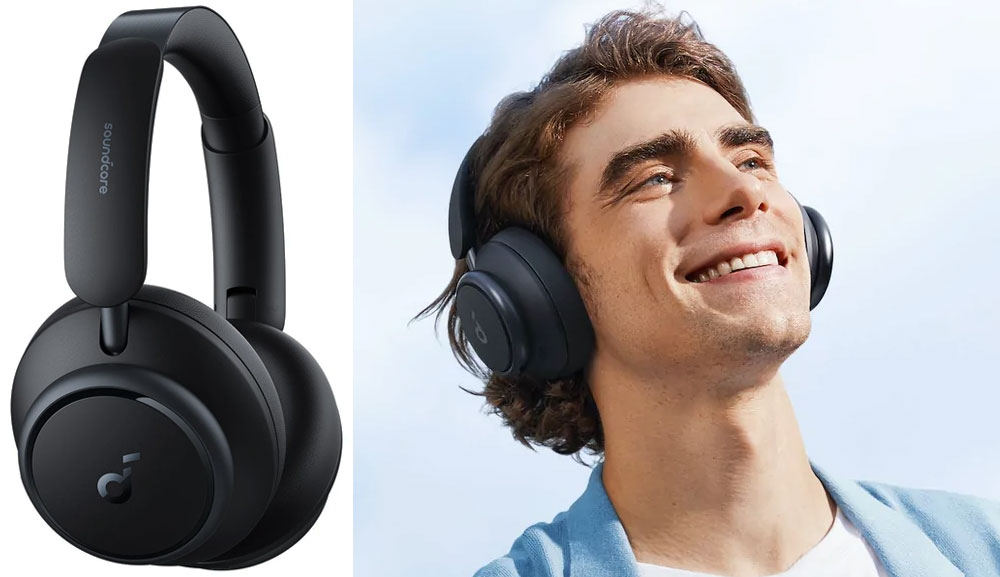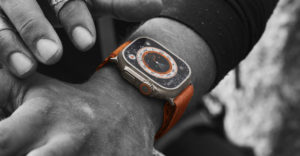Last week Apple launched new iPhones with several interesting new features. One feature reports if you have been in an accident (assuming your phone can connect), and another connects the phone to a satellite in a very limited way for those times when a cellular tower is out of range.
Starlink and T-Mobile are publicizing a yet non-existent service that should make Apple’s satellite service look like it escaped from the modem years. These all follow AST SpaceMobile, which will be putting up its first 4/5G satellite next year to begin its coverage.
Let’s talk about our future of satellite cellular services this week. Then we’ll close with my product of the week: a very affordable pair of active noise-canceling headphones that may be perfect for those that take long trips and need to sleep with them on.
Apple Fills a Need
Apple’s Emergency SOS via satellite service, which will be the first to go live with these next-generation services, is very limited. Its one big advantage is that it will work long before the others reach critical mass.
If you are in the middle of nowhere and need help, it will not do you any good to have a service that doesn’t work yet, so the limitations on the Apple service only become a problem for Apple when the other services get to critical mass. Look for that in or around 2025.
This service only works in open areas with a clear line of sight to the sky, and, I expect, you may at times have to dance around a bit to get an adequate signal. It will not work if you fall into a ravine, get stuck in a cave, or are in a bunker.
Still, every year there are a ton of people that get stranded out where I live. They don’t realize that the weather can change very quickly here, and if you are a long way from your car or civilization in only shorts and a T-shirt when that happens, you’ll need help, or you are likely to lose anything from a few fingers to your life.
The app helps you find a satellite and then, through menus, uses the intelligence of the phone to minimize the message and get it to someone who can help you. It can, however, take anywhere from 15 seconds to several minutes to get a clean line of sight to the satellite for this to work. So, if you have a broken leg or are otherwise disabled, you may still be out of luck.
Apple is working with Globalstar for this feature. IPhone 14 users, the only ones to initially get this feature, will get two years of this service for free. By then, there will likely be alternatives available, and this initial offering will undoubtedly also improve.
The service is better than nothing, and right now, unless you want to invest in an expensive Iridium (or other satellite) phone, that is pretty much your only choice. Iridium’s service, while expensive, is much less than I recall it being but still more expensive than traditional cellular.
Starlink and T-Mobile
Elon Musk has an idea a minute, and many are surprisingly good. Though I worked with a guy like Musk and know that working for or with someone like this is a nightmare because not every idea is good and, generally, people like this can’t tell the difference.
Having said that, the idea of turning the Starlink satellites into a telephone solution is interesting. However, given Starlink is already experiencing bandwidth issues, this service could make Starlink itself less attractive if it reduces, as it likely will, bandwidth to existing Starlink customers.
Musk also tends to overpromise and underdeliver, miss announced delivery dates, and create a considerable number of problems for his companies. Still, SpaceX is the cheapest launch platform currently in service, is surprisingly reliable, and most of the Starlink reviews I’ve seen have been impressively positive.
Personally, I would have waited until Starlink was profitable and performing at scale before offering another service on the network, but that is not Musk’s way. Until now, his big, risky bets have mostly worked out. But he and his companies remain one major mistake away from a crisis. Given the complexity of his companies, it seems almost certain he will eventually hit a nasty wall.
The service will initially be more capable than Apple’s satellite offering but not true cellular, and it will require the Starlink satellites to be upgraded. The beta of this service is rumored for late 2023, with full service expected within the following year in areas where there is a critical mass of the new satellites. If it doesn’t reach critical mass, T-Mobile and Starlink are in an interesting position to be the first to succeed with a satellite-based smartphone solution.
AST SpaceMobile
AST SpaceMobile, which is slated to launch its low earth Satellite in 2023, has partnerships with companies like Vodafone and AT&T providing a strong path for worldwide initial coverage. They will need between 45 and 65 Satellites to get to critical mass, which should happen, assuming no major market shifts or the emergence of a better-competing technology at scale, before the end of 2025.
The company is wrapped with 2,400 patents and should be able to provide decent 4/5G coverage once they get to critical mass. The service would be treated much like international travel or on-plane service for areas where there are cellular alternatives, so your phone will work where it currently doesn’t. Or as a primary phone service for those out of cellular coverage areas, like remote land or sea locations.
It certainly would be an improvement over ship-to-shore and most radio solutions for police and first responders working in areas where there either is no cellular service or where cellular service has been disrupted. Unlike the other two services, AST SpaceMobile’s will be like regular cellular in that it will support both voice and data and not have the limitations of the other two services. But its quality and data throughput will lag terrestrial cellular services indefinitely.
This service should also work on planes and be superior to what you currently get on an airplane. It will support both voice and data, while planes currently just support data (people have been against getting cellular coverage on planes for fear that those using it would drive them crazy with loud constant phone calls).
Wrapping Up
With Apple’s announcement last week, we are now in the world of consumer satellite cellular communications and the increasing potential to be able to call for help from anywhere in the world, regardless of where the cell tower is located.
This could be huge for those that find themselves in trouble or lost in remote areas and provide a level of peace of mind for parents who freak when they cannot locate their kids.
Apple is just the beginning. Companies like Starlink and T-Mobile promise far better data bandwidth than Apple, and AST SpaceMobile promises a global general-purpose 4/5G cellular service incorporating both voice and data in the same general timeframe.
By the second half of this decade, the idea of being out of service may be as obsolete as the need to find a phone booth was back in the 1990s. That, my friends, is something worth looking forward to.

Soundcore by Anker Space Q45 Noise-Canceling Headphones
I travel quite a bit, so I have a lot of noise-canceling headphones.
Most headphones are not only too expensive, they also are not comfortable to sleep with on a plane. Many are in the $250+ range, which is too expensive for kids, and given I tend to leave these on airplanes, they add up for me as well. In addition, I do not like earbuds or earplugs because they make my ears itch, making it harder to fall asleep.
Well, I may have found the perfect solution in a set of headphones you can sleep in: the Soundcore by Anker Space Q45 adaptive noise-canceling headphones. At a retail price of around $150 on Amazon, they are not the cheapest on the market, but they are a ton less expensive than most of the headphones I currently have.

Space Q45 Noise-Cancelling Headphones (Images Credit: Soundcore)
These are an over-the-ear design with very soft pads, making them much easier to sleep with than my Bose and Sony headphones, and far more comfortable long term, for me, than earbuds or on-ear products.
The Space Q45 headphones boast a massive 50-hour battery life (I have not tested this), support Bluetooth 5.3, and have one of the strongest noise cancellation solutions I’ve tested — including five levels of noise cancellation that either kick off automatically or can be controlled by an app. They have a sound passthrough button in case someone wants to chat with you — and you want to listen.
These headphones have big 40mm drivers that lend themselves to decent lows, and the sound range was, to my ears, very good with significant range. For those that need an over-the-ear, affordable, noise-cancelling solution they can sleep with, the Soundcore by Anker Space Q45 headphones may be the ideal solution — and is my product of the week.


























































I found that satellite phones are very useful, i got my new iPhone 14 Pro and im very happy!